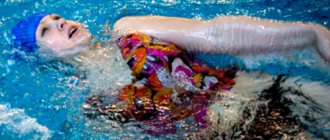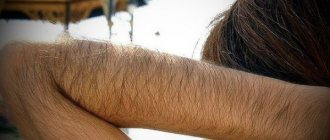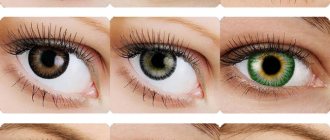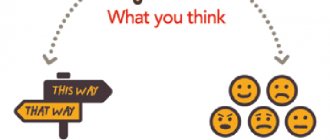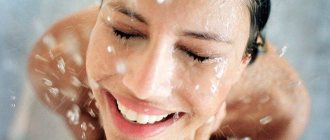How to choose a pool?
This is where you should start, because your comfort and learning productivity will largely depend on the pool itself.
To begin with, pay attention to such parameters as the length of the swimming bowl, the number of lanes, their width, and the depth of the pool. There are two standard lengths - 25 meters and 50 meters (“short” and “long” water). The number of tracks can vary from 3 to 10, and the width of each should be 2.25-2.5 meters. The depth of the pool varies widely - from 1.5 to 6 meters.
The pool can be a separate sports complex, or it can be located in a fitness center. In the first case, it will be more in line with the standards and regulations applicable to swimming pools, and in the second, everything depends on the fitness center, which has the right to call a bowl of any size a pool.
Let's look at the features so you can compare both options.
Swimming pool as an independent sports complex
Before going to such a pool, call the sports complex and clarify the rules for visiting and the time of public swimming sessions. Please note that due to high volumes of visitors, swimming in some pools is by appointment only. You will also need a medical certificate.
Now get to know two simple terms that may come in handy.
Mass swimming is swimming in which visitors swim independently in designated lanes.
A swim session is a 45-minute session dedicated to one swimming session.
Mass swimming differs from group swimming (training a group of swimmers by a coach) and from personal training (training one swimmer by a coach). If you want to exercise yourself, this pool is perfect, but the session time will be limited to 45 minutes. Do not rush to immediately take out a subscription for several visits. Make a one-time visit to determine if this pool is right for you.
How to properly visit the pool with children
It would be a huge mistake to take your child to the pool without checking the “family clock.” Yes, almost every pool includes time set aside for families. At this time, you can freely have fun, as there will be no swimmers or old people who come to exercise.
This time means that you will take with you inflatable rings, balls, put armbands on your children and introduce them to sports.
What to take to the pool?
To visit the pool you will need:
Choose a suit made from thick materials that are chlorine-resistant.
Rubber, silicone, fabric or combined materials - at your discretion. Any will improve your streamlining, but none will protect your hair from getting wet.
They will protect your eyes from chlorine and make swimming more comfortable.
Regular beach flip-flops will do, although there are also special slippers for the pool - they are less slippery and fit more snugly on wet feet.
You cannot do without soap and a washcloth - this is a must-have shower kit before and after swimming.
A microfiber sports towel is best - it is compact and absorbs moisture well.
And finally, if you choose a swimming pool as a sports complex, then you will definitely need a medical certificate .
You can find out about the requirements for certificates in a particular pool on the website of that pool or by phone. Usually this is a certificate from a therapist with the seals of a medical institution. But sometimes this is not enough and tests are required. For children, tests for visiting the pool are mandatory; for adults, they are carried out only in some cases.
How to behave in the pool?
The fitness center has a swimming pool available for use at any time.
In a sports complex, sessions often start as scheduled. You are allowed to go to the locker room 15 minutes before the start of the swimming session.
Once in the hall, take off your outerwear and change into slippers.
Outdoor shoes are usually left in the wardrobe. Take the locker key and go to the locker room.
Take a shower without a bathing suit, then suit up - suit, hat, glasses. You can take a bottle of water into the pool area - but only a plastic one, since it is strictly forbidden to bring glass objects there. If anything glass breaks in the water, swimmers will have to be evacuated and the pool drained and cleaned.
Before you start swimming, you can warm up - do squats, stretch your arms and shoulders. Warming up reduces the likelihood of injury. After this, estimate the number of swimmers in the lanes - obviously, the one with fewer of them is better. But not only the number, but also the level of swimmers is important - choose those who swim the same as you.
Please note that some lanes may be designated for private coaching or group exercise.
To enter the water, use the ladders. Diving into the water from tables and sides is unsafe, and even experienced swimmers do not practice such diving during training.
There is two-way traffic on the track - swimming on the right side. Sometimes, if two swimmers occupy a lane, they may agree to split the lane in half, but as soon as a third joins them, the lane becomes two-way again.
To make it easier for you to navigate, there are markings on the bottom of the pool for each lane. You should be to her right.
RULES FOR ATTENDING CLASSES IN THE POOL
- You must arrive to classes 15 minutes before they start. If the client is late, the lesson time will be reduced. If the delay is more than 15 minutes, the administration reserves the right to cancel the lesson.
- When you are on the territory of the center, outer clothing must be left in the cloakroom, and shoe covers must be put on outdoor shoes upon entry.
- In the pool and aquatherapy area, you must use replaceable shoes, and leave outdoor shoes in the cloakroom in plastic bags.
- When visiting the pool, there are special changing rooms equipped with separate lockers. The key to the locker is issued by the administrator. The key must be returned at the end of the lesson. If you lose the key, you must inform the administrator and pay a fine of 500 rubles. You can enter the locker room 15 minutes before the start of class and stay in it for 15 - 20 minutes after the end of class.
- Before visiting the pool, you must take a shower without a bathing suit and wash yourself using detergents and a washcloth. After showering, you must put on a bathing suit.
- Children aged 3 years and older must wear a swimsuit with a cap and a change of shoes in the pool.
- Children under 3 years of age must use a special swim diaper. Before class, the child must visit the toilet. If a child empties his bladder and/or bowels in the pool, the administration has the right to cancel this and subsequent classes. In this case, the lesson for this child is considered completed. In case of contamination of the pool (with subsequent cancellation of classes), a fine of 5,000 rubles will be charged. If such actions are repeated regularly, the administration has the right to refuse service.
- To practice in specialized gymnastics rooms, you must change into sportswear and cotton socks.
- Entry to the class is by prior registration for a specific time.
- Parents personally hand over their child to the instructor before the lesson and personally pick them up after the lesson. The lesson ends at the instructor's signal.
- Clients are required to treat the center equipment with care. Observe and maintain public order and generally accepted standards of behavior, behave respectfully towards other customers and service personnel.
- If it is necessary to eat food (cookies, fruit, juice, yogurt, etc.) after class, the client is located in the center lobby.
- Visitors with last-minute appointments must leave the center no later than 9:30 p.m.
- It is necessary to notify about the cancellation or rescheduling of a lesson at least 12 hours before the visit in person or via SMS to the center’s cell phone (+7 981 696 20 96) during opening hours. Otherwise, subsequent classes will be removed from the schedule, and further registration will be made as for one-time classes.
- Changes in the lesson program are possible after consultation with specialists.
How to start swimming?
If you have never swam in a pool, we recommend starting with lessons with a trainer. Every pool has this opportunity. Led classes will teach you basic skills that you can develop on your own.
If you decide that you can handle it yourself, here are some tips:
Warm up. This is where any sport begins. To stretch all the muscles involved in swimming, swim six “pools” (for example, if the length of the pool is 25 meters, you need to swim these 25 meters six times) in the following mode: crawl, breaststroke, backstroke, backstroke, breaststroke, freestyle . This warm-up will prepare you for any swimming workout.
Cloth
So, you worked out in the gym, went to the pool, took off your workout clothes, put them on the bench and jumped into the water. Sound familiar? If yes, then please don't ever do that. Things wet with sweat can, to put it mildly, confuse others, and besides, we already mentioned the shower. Leave your clothes in the locker room, take a shower, put on your swimming trunks and only then go swimming. Spend three minutes more time in order not to spoil the water in which you are supposed to be.
Budget of 125 million and first criticism: Kenneth Branagh on the new fantasy “Artemis Fowl”
Woman Saved Her Bathtub Using Grapefruit and Sugar (Took 2 Minutes)
June 21: can a solar eclipse defeat coronavirus (scientists’ opinion)
Health of soul and body. How to visit the pool correctly?
How to look fit and cheerful? How to enjoy hardening and prepare for summer swimming? The answer is simple - go to the pool! People who exercise in the pool suffer from fewer colds and are physically more prepared for an active “summer” lifestyle. Undoubtedly, water activities in the pool strengthen the overall immunity of the body. “What about intimate health?” you ask, and you will be right in your fears.
Are we not afraid of bleach?!
It is customary to disinfect pool water by chlorination, ozonation, fluoridation, ultraviolet and ultrasonic treatment, and the addition of copper or silver ions are also used. There are also various chemical mixtures that have a sufficient disinfectant effect, but they are too expensive to use. All methods of disinfecting pool water, except chlorination, are expensive, so every time we visit the pool we are forced to experience the whole “bouquet” of the harmful effects of bleach.
When chlorine gets into water, it forms acids that have a negative effect on our skin and mucous membranes. All substances formed during water treatment have an irritating effect on the skin as a whole, being strong allergic and toxic reagents. However, chlorination is still the most common method of treating water in swimming pools due to its sufficient reliability and low cost.
So, how can you protect yourself from the negative effects of chlorinated water? Firstly
, wash off your makeup before exercising in the pool. Chlorine and its derivatives are strong allergens in themselves, and in combination with cosmetics on your face can cause individual allergic reactions. You can apply a special protective cream to clean skin, which creates a thin film and prevents harmful influences.
Secondly
, use diving goggles. Chlorinated water can cause allergic conjunctivitis - inflammation of the outer transparent mucous membrane of the eye, which is characterized by itching, burning, lacrimation, swelling of the eyelids and other pain. Needless to say that performance and general well-being in this state are noticeably reduced?
Treatment of allergic conjunctivitis consists of completely eliminating the allergen from a person’s life, in our case this will be stopping visiting the pool, prescribing cold compresses and artificial tears (these drugs are sold at the pharmacy) to reduce discomfort, plus the use of anti-inflammatory and antiallergic drugs.
Third
, use pool caps. Professional swimmers use caps exclusively made of silicone. High-quality pool accessories are not cheap, but they eliminate water getting on your hair, as they fit your head very tightly. In any case, after visiting the pool, you must use hair cosmetics that restore the hair structure and protect it from external influences.
Fourth
, use intimate cosmetics before and after visiting the pool, intimate gels and sprays will provide the necessary antiseptic effect and hydration of the mucous membranes, special personal hygiene products are also relevant. Of course, contracting sexually transmitted infections directly in the pool is practically impossible if you follow the rules of personal hygiene; moreover, all forms of bacteria die in chlorinated water. Experts say that for infection to occur, a “rubbing effect” into the mucous membranes is necessary, and the concentration of the pathogen must be significant, which is difficult to achieve in chlorinated pool water.
Intimate health is a frequently raised topic in medical literature, in popular publications, and on Internet forums. It can be assumed that a fairly young part of the population (both men and women) is faced with a relatively new problem of the “war of bacteria” - dysbiosis of the genital organs. Under normal conditions (in a healthy body), the vagina is inhabited by the so-called normal microflora - that “clan” of bacteria whose activity ensures intimate health.
Normal microflora is: lactobacilli, or Doderlein bacilli - 90%, bifidobacteria - just under 10%, the remaining bacteria - staphylococci, gardnerella, candida fungi, streptococci, mycoplasma, ureaplasma. The immune system has no effect on normal microflora, but acts aggressively on infectious agents, releasing a variety of biologically active substances that maintain balance.
The reasons for this imbalance may be different. For example, hypothermia; changes in hormonal levels associated with pregnancy and childbirth, age-related changes; stressful situations that abound in the modern business world; improper intimate care; pathogens; long-term treatment with drugs that disrupt the balance of microflora, primarily antibiotics and antimicrobials.
Until recently, doctors recommended vaginal tampons with various bactericidal substances for intimate protection when visiting the pool, but these medications themselves cause disturbances in the microbial balance in the vagina, so this method of protection is recommended in exceptional cases. At the same time, tampons can contribute to the proliferation of pathogenic microflora if used incorrectly.
Fifthly
, try not to visit the pool during menstruation, since these days women’s immunity is especially weakened and the likelihood of developing elementary inflammation is quite high.
At sixth
, after visiting the pool, use special cosmetics for the face and body, the components of which restore the hydro-lipid barrier on the surface of the skin. It provides the necessary moisture; in its absence, the skin becomes dehydrated. Many cosmetic companies produce specialized “after the pool” series. The main components responsible for restoring the structure of the skin: essential fatty acids - linoleic and linolenic, sea minerals, seaweed extracts - kelp and fucus, hyaluronic acid, urea, amino acids.
Seventh
, antifungal foot products will come in handy and can be used to prevent infection when visiting the pool. These can be both medicinal and cosmetic preparations based on plant and synthesized components.
About stress
The often-mentioned term “stress” is perceived by people as something negative. Did you know that visiting the pool is also stressful for the body? A variety of water procedures are a mild “physiological” stress for our body: physical exercise in the pool, sauna or bathhouse, hydromassage, contrast showers.
Physiological means a natural process during which biologically active substances are released in the body - hormones, with the help of which the body adapts to changing environmental conditions, in this case this condition is cold or hot water and exercise in it. Such stress is very beneficial for the body as a whole - at this time it comes to life, “wakes up”, the active background is “remembered” by the immune system. The more you do, the higher this memorized level, the more your immune system strengthens.
How useful is learning infant swimming? A doctor and hydro-rehabilitation specialist answers your questions.
Number of views: 9,542
Infant swimming training - is this activity necessary for your baby? It is well known that the ability to swim is a useful skill; doctors advise that children be sure to sign up for the pool if there are no contraindications. But is it necessary to teach a baby to swim if there are benefits from such early lessons? This and other questions were answered by Hotline’s Q&A guest, a doctor, hydro-rehabilitation specialist, and early swimming instructor.
Question: Is it true that children who learn to swim early walk worse later?
Answer: Indeed, occasionally there is an opinion that teaching infant swimming promotes the formation of different neural connections than those that are formed during the formation of walking skills, so swimming in the pool can supposedly delay the age at which the baby begins to walk. However, in practice, one can see the opposite effect - all children who engage in early swimming, on the contrary, develop faster intellectually and physically, due to richer sensory-motor experience. And think about it – how long does a child spend in the pool? Most often 2 times a week for 30 minutes. Is it really possible that the rest of the time of “land” cognition of the world will not be enough for the formation of stable motor skills that ensure getting up and walking?
Question: We are 2 months old, our baby was diagnosed with dystonia, can we start learning infant swimming?
Answer: The term “dystonia” means a violation of the mechanism of mutual regulation of the tone of various muscles among themselves. When this mutually coordinated regulation is disrupted, this is what is called dystonia. The fact is that in the first year of life, especially in the 1st months, children are normally very dystonic, since the formation of interaction and regulation of the tone of various muscle groups will occur up to 2 years, and most actively in the first 12 months. You can often see a certain one-sidedness: movements of the limbs of one half of the body may be more active, the tone is slightly higher. This is typical for children under 6 months. As the brain and nerve pathways develop, as well as motor skills, symmetry of movements is formed. Massage courses and early swimming have a very positive effect on the establishment of correct nerve connections, so swimming is not only possible, but also useful in your situation.
Question: My son was diagnosed with hip dysplasia; he is now 4 months old and wears splints. I want to teach my son to swim, but I doubt whether the water will harm us, is it too late now?
Answer: Early swimming is often recommended in the complex treatment of mild to moderate acetabular dysplasia of the hip joint. In a situation where the baby is prescribed splints, we are talking about a more pronounced degree of dysplasia, so I would recommend waiting until the head of the femur in the acetabulum is stabilized, the splints are removed, and only after that begin water practices, which can help go through the rehabilitation period. As for the age to start classes, it’s never too late; you can start at any age.
Question: There is always chlorinated water in the pool, isn't it harmful to the child, won't it dry out the skin?
Answer: Recently, new standards for water disinfection in children's pools have been adopted, according to which the required chlorine content in pool water has been significantly reduced. Previously, it ranged from 0.5 to 1.2 mg/l, now, respectively, from 0.3 to 0.5 mg/l, which practically corresponds to the chlorine content in tap water, so swimming in the pool in this regard is no more dangerous than bathing in a home bath.
Question: Will the baby be scared when diving, because he can get scared without his mother? What if this turns into a lot of stress?
Answer: The task of an early swimming instructor is to prepare the child for the first dive as gently as possible, so that the child not only does not feel discomfort, but even experiences the joy of new experiences. It is not at all necessary to give your baby to a coach; it is much better to go for infant swimming lessons in a group where the mother will be next to the baby all the time. This practice will only increase the emotional closeness between mother and baby and will help you approach the first dive with ease and comfort under the strict guidance of the instructor. As a rule, there are up to 5 – 6 mother-child pairs in groups, this allows you to find an individual approach and devote sufficient time to each child for adaptation.
Question: When is the best time for a baby to start swimming in 8 months?
Answer: You can start early swimming from the moment the umbilical wound heals at any age.
Question: How does swimming affect the lungs? I read that in swimming pools we all breathe chlorine fumes, and they have a harmful effect on the human respiratory tract.
Answer: Indeed, chlorine, interacting with organic contaminants in water, forms harmful intermediate compounds that irritate the skin and mucous membranes. However, as I already answered, the standards for the chlorine content in water in children's pools have been significantly reduced, so swimming in a pool is no more dangerous than in a home bath. In addition, on the part of pool visitors, observing the rules of personal hygiene (mandatory shower before entering the bowl) will significantly reduce the penetration of organic substances (for example, microscopic skin scales) into the pool water, and, accordingly, the formation of intermediate chlorine compounds.
Question: Is it true that babies who swim from birth become accustomed to the wrong body position in the water, and then it is very difficult to retrain them?
Answer: The baby is taught to have an incorrect body position by wearing swimming rings around the neck or by an illiterate person working with the baby. With the right support, kids immediately learn the correct body position and over time move on to conscious, correct movements in the water and do not need relearning.
Question: Are there any categorical contraindications to early swimming, so that it’s absolutely forbidden?
Answer: Contraindications are: • Severe heart defects • Various types of infections (ARVI, intestinal infections, pneumonia, fever of unspecified etiology, active tuberculosis) • Neurological pathology, which is accompanied by convulsive syndrome, hydrocephalus • Serious disorders of the musculoskeletal system that require fixation of the limbs (for example, dislocations of the hip joints, fractures), osteomyelitis • Open purulent wounds, strepto- and staphyloderma.
Question: What should be the temperature of the water and air in the pool so that the baby is comfortable and does not catch a cold later?
Answer: In accordance with current sanitary rules and regulations, the air temperature in the halls with bowls of children's pools should be +31 °C - +32 °C (1 °C - 2 °C above the water temperature), in changing rooms and showers +25 ° C - +26 °C. This temperature is absolutely comfortable for most babies, especially if at home the temperature of the water when swimming is gradually reduced from +36 °C to +30 ° - +32 °C.
Question: Where to start learning infant swimming at home, at what age, and in what position is it best to hold the baby?
Answer: Bathing in a large bath can begin as soon as the umbilical wound heals. The water temperature for the first swim should be +34 ° - +36 °C, gradually it is better to reduce the temperature to +30 ° - +32 °C for hardening and preparing for classes in the pool. There are several simple “bath” supports, one of which looks something like this: the baby is on his back, the parent’s palm supports the baby’s head, the baby’s body moves freely in the water. The head should be immersed in water, without fear of getting the ears wet, just make sure that water does not get into the nose and mouth. The second of the most common supports is “on the stomach”, the parent supports the baby’s chin with his palm. By two to three months, it is better to move your activities to a larger “body of water” - a swimming pool, since the small space of the bathroom limits the child’s motor potential.
Question: What reaction from a child indicates that it is better to stop learning infant swimming or slow down? After trying to teach us to hold our breath by dousing, we fall asleep restlessly and sometimes it seems that the pupils do not react to light as well. We are 4 weeks old. How quickly can he adapt to being underwater?
Answer: Under no circumstances should you force diving if the baby does not like this process. Crying, anxiety, restless sleep are signs that parents are in a hurry. Try to do everything as gently as possible, without pressure, do not water it directly on your face, start by watering it on your shoulder, temple, cheek, first without immersion, you can even invite a specialist to your home. Don’t be afraid of the fading of the breath-holding reflex; you can teach a baby to dive at any age. The main thing is not to develop a negative attitude towards water in your baby. From two months you can move to the pool under the supervision of an instructor.
Question: What should the water temperature be at the beginning of training and how should it be changed over time?
Answer: The water temperature for the first swim should be +34 ° - +36 °C, gradually it is better to reduce the temperature to +30 ° - +32 °C for hardening and preparing for classes in the pool.
Question: My eldest child and I went for a swimming club in the garden pool at 1.6. Now, waiting for the second miracle, I’m asking myself whether it’s worth starting “swims” before the baby is three months old and where to organize infant swimming training: at home in the bathroom or better in the pool with a specialist?
Answer: You can start swimming lessons with a newborn from the moment the umbilical wound heals in the home bathroom, since there is a comfortable, familiar environment there. However, by two to three months it is better to move water practices to the pool, since the small space of the bathroom limits the child’s motor potential.
Question: Please tell me, our 1 year and 3 month old child would like to start taking him swimming, is it worth starting so early? At what age is it best and how to do it correctly?
Answer: You can start early swimming from the moment the umbilical wound heals at any age. Early swimming is a unique opportunity to improve your health, teach a vital skill, build basic confidence in the world and, of course, get indescribable pleasure! I think the best format for starting classes at your age is group classes in a mother-baby pool under the guidance of an instructor. In this case, the child feels comfortable next to a loving parent, which not only allows him to gently and joyfully enter the world of water practices, but also strengthens trust and emotional closeness between mommy and baby.
Question: What time of day is best to take your child to the pool? (baby 6 months)
Answer: It is important that by the time of class the child is well-rested and not hungry. The best thing to do is to feed the baby after waking up and start working out an hour later. The time of day is not important.
Question: How many times a week is enough to go to the pool at 6 months so that you don’t forget your skills?
Answer: The optimal frequency of early swimming is 2 times a week.
Question: We are changing the pool, the water temperature in the previous one was 32-34, and in the new one 29-30, how to adapt the child to such a change?
Answer: In your situation, you can use a gradual decrease in temperature when swimming in a home bath, then the transition to swimming in a pool with a lower temperature will be almost unnoticeable.
Question: How long is enough time to swim with a child? (6 months)
Answer: For a six-month-old baby, a twenty to thirty minute lesson is enough.
Question: Is it possible to combine a swimming pool and a massage on the same day, and if so, how long, and both?
Answer: You can, I would recommend dividing these activities into halves of the day, for example, a swimming pool before lunch, and a massage after, or vice versa. The duration of classes in the pool is 30 minutes, massage - depending on the situation, a massage therapist will advise you.
Question: At the same time, kindergarten children began to be brought in with infants, is it worth bringing a child in such a situation?
Answer: Typically, early swimming classes in the pool are graded by age. Infants study in their own groups, and kindergarten-aged children study in their own, since different exercises and teaching technologies have been developed for different age groups. You should check with the pool administration whether it is possible to divide different age groups into more homogeneous ones, or look for a pool that is more thoughtful in terms of optimizing the flow of children.
Question: Is it necessary to teach a child to dive? How beneficial is this for his health and development? At what age should I start?
Answer: Learning to swim as an infant does not set learning to dive as an end in itself; our main goal is to improve health, develop a positive attitude and strengthen emotional intimacy and trust with a loving adult. You can do without learning to dive, but in such a situation you should not expect independent swimming in preschool age. However, with a gentle, friendly approach, if the coach and mother give the baby as much time as he needs to adapt, diving will easily and naturally become part of children’s favorite pastimes and will also be an excellent tool for learning to swim independently.
Question: How often and for how long can I go swimming with my baby? Will learning to swim as an infant be stressful for your baby?
Answer: if we are talking about initial classes in the home bathroom - every day, 20-30 minutes. The optimal frequency of classes in the pool is 2 times a week, the duration is the same. Since the water environment is natural for the baby, it will not be stressful, the main thing is to ensure the correct temperature (36 degrees for the first bathing with a gradual decrease to 30-32) and behave gently, non-violently towards the baby, in no way forcing events.
Question: I want to start going to the pool with my baby, we are 7 months old. What should you pay attention to when choosing a pool and trainer?
Answer: Many factors influence the choice of pool. The first thing you can pay attention to is the room, it should be clean and bright. Check with the administration about the method of water disinfection and purification and the frequency of replacement.
In modern swimming pools, water is continuously filtered, pH and the content of chlorine and ammonia compounds are indicated every two hours, and once a month water samples are sent to the sanitary station for bacteriological and parasitological examination. Based on the results of these tests, the water is replaced if necessary. Low doses of chlorine, ultraviolet light and active oxygen are used for disinfection. When choosing a coach who will teach infant swimming, inquire about his education and evaluate his teaching talent. Sports achievements are especially relevant for a coach teaching older children over 5 years old, since the basics of swimming styles, technicality, and professional skill are so important to them. For infants, a coach with a medical education and a gentle, attentive approach are more interesting, since in infant swimming, the coach’s knowledge of the anatomical and physiological characteristics of newborns, charisma and attentive attitude are more important. Based on the age of the child, evaluate what you want to get - sports or health promotion. Also, when attending group classes, check the number of mother-baby pairs in the group. Each child in groups of up to 6 pairs will receive sufficient attention from the trainer.
Question: Is it possible to bathe a baby in chlorinated water?
Answer: What kind of chlorinated water are we talking about? We all bathe our babies in chlorinated water because our tap water contains chlorine compounds.
Question: They offer a swimming pool in the garden at 3 years old, is it worth going, does it help harden the child? Is it possible to drive with a runny nose or cough?
Answer: A swimming pool definitely helps to recharge the body; a garden pool is a good option that saves mom’s time (there is no need to transport her somewhere else). But with manifestations of ARVI, you should not take your baby to the garden or to the pool; think about the safety of other children.
Question: At what age is it optimal to start learning infant swimming?
Answer: Bathing in a large bath can begin as soon as the umbilical wound heals. The water temperature for the first swim should be +34 ° - +36 °C, gradually it is better to reduce the temperature to +30 ° - +32 °C for hardening and preparing for classes in the pool. It is advisable to move to the pool from 2-3 months of age, when the bathroom becomes a bit crowded.
Question: We swim laps in the bathroom at home and at a certain moment the child begins to be afraid and cry. Is it better not to offer such procedures anymore or to wait and offer them again?
Answer: I already answered live that I recommend limiting the use of a neck circle as much as possible, since it accustoms the baby to an incorrect position of the head. Any negative reactions indicate that you need to change tactics. Assess the correct water temperature, stay in an emotionally upbeat mood, don’t be nervous, laugh with your baby - stop swimming and play a fun game!
